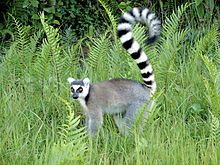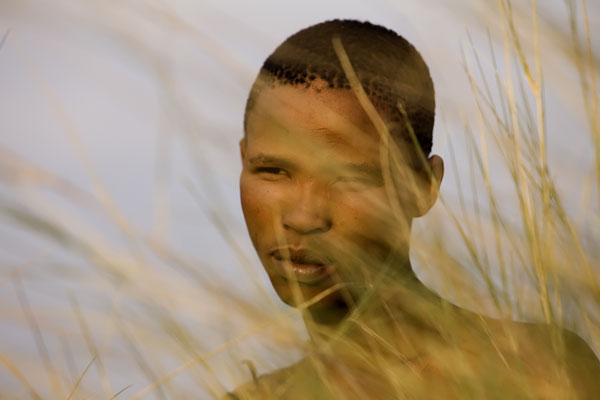Source google.com.pk
Western Portion of The Island of New Guinea
The Vogelkop-Aru Lowland Rain Forests [AA0128] are diverse in terms of both geography and biodiversity, and they constitute the majority of western Irian Jaya, the rest of the region being either montane forest or freshwater swamp forest. These relatively intact lowland tropical rain forests are among the largest and richest forests in the Australasian Realm. Limestone and ultramafic rock formations support unique and restricted-range floras.
SCIENTIFIC CODE
(AA0128)
ECOREGION CATEGORY
Australasia
SIZE
29,900 square miles
STATUS
Critical/Endangered
HABITATS
Description
Location and General Description
This ecoregion is made up of the lowland and hill (less than 1,000 m) moist forests of the Vogelkop and Bomberai peninsulas and the surrounding islands, including Misool, Salawati, Waigeo, and Kepulauan Aru in western Irian Jaya. The climate of the ecoregion is tropical wet, which is characteristic of this part of Melanesia, located in the western Pacific Ocean north of Australia (National Geographic Society 1999). Northern New Guinea is a very active tectonic area with a complex geologic history (Bleeker 1983). The surface geology of this ecoregion is composed predominantly of sedimentary rock and recent alluvium, with some large areas of limestone or ultramafics near Sorong and on Waigeo and Misool islands (Petocz 1989).
This ecoregion of plains and alluvial forests is among the most floristically rich in all of New Guinea and includes many important timber species (Petocz 1989). Most of the ecoregion is composed of a combination of alluvial and hill type tropical wet evergreen forest, with smaller amounts of limestone forest (MacKinnon 1997). Lowland alluvial forest has a canopy that is multitiered and irregular, with many emergents. The forest understory contains a shrub and herb layer with a variety of climbers, epiphytes, and ferns (Petocz 1989). Palms may be common in the shrub layer (Paijmans 1975). The very mixed floristic composition of the canopy trees includes Pometia pinnata, Octomeles sumatrana, Ficus spp., Alstonia scholaris, and Terminalia spp. Additional important genera include Pterocarpus, Artocarpus, Planchonella, Canarium, Elaeocarpus, Cryptocarya, Celtis, Dracontomelum, Dysoxylum, Syzygium, Vitex, Spondias, and Intsia (Paijmans 1975). The somewhat lower-canopy, more closed lowland hill forest contains more open shrub layer but a denser herbaceous layer. Palms are fewer in number. The dominant canopy trees include species of Pometia, Canarium, Anisoptera, Cryptocarya, Terminalia, Syzygium, Ficus, Celtis, Dysoxylum, and Buchanania. Koompassia, Dillenia, Eucalyptopsis, Vatica, and Hopea are locally abundant. Dense stands of Araucaria, the tallest tropical trees in the world, are present in scattered locations (Paijmans 1975; Nightingale 1992).
On Waigeo Island and the adjacent northwest coast of New Guinea, ultramafic rocks result in a serpentine flora, a belt of low shrubby vegetation composed of Alphitonia spp., Dillenia alata, Myrtella beccari, and Styphelia abnormis (Brooks 1987).
Aru Island is composed of rain forest, savanna, and mangroves (R. Johns, pers. comm., 2000).
Biodiversity Features
Generally, this ecoregion exhibits low to moderate richness and endemism compared with those of other ecoregions in Indo-Malaysia. Reptile and amphibian richness, though poorly studied, is thought to be high, however.
Forty-seven mammal species are found in the ecoregion, of which eight are endemic or near endemic (Flannery 1995; Flannery and Groves 1998) (table 1). The mammalian fauna consists of a wide variety of tropical Australasian marsupials, including tree kangaroos (Flannery 1995). The Arfak long-beaked echidna (Zaglossus bruijni) was considered endangered before it was split from the Papuan echidna (Zaglossus bartoni) (IUCN 2000) and presumably would still be considered so because it is a focal prey item for humans (Flannery 1995; Bonaccorso et al., in press). The dusky pademelon (Thylogale bruinji) and New Guinea quoll (Dasyurus albopunctatus) are considered vulnerable (IUCN 2000).
Table 1. Endemic and Near-Endemic Mammal Species.
Family Species
Tachyglossidae Zaglossus bruijni
Dasyuridae Phascolosorex doriae
Macropodidae Dendrolagus ursinus
Macropodidae Thylogale brunii
Macropodidae Dorcopsis muelleri
Muridae Melomys lorentzi
Muridae Pogonomelomys mayeri
Muridae Pogonomelomys bruijni
An asterisk signifies that the species' range is limited to this ecoregion.
The avifauna of the ecoregion has a clear Australasian flavor, with representatives of several Australasian families including Ptilonorhynchidae, Eopsaltridae, Meliphagidae, and Paradisaeidae There are 366 bird species inhabiting the ecoregion (Beehler et al. 1986; Coates 1985). This ecoregion corresponds almost exactly with the West Papuan lowlands EBA (the EBA also includes the Southern New Guinea Freshwater Swamp Forests [AA0121] ecoregion but does not include Aru Island), which includes nineteen species of restricted-range birds, nine of which are found nowhere else on Earth (Stattersfield et al. 1998). Twenty-one bird species are endemic or near endemic (table 2). Bruijn's brush-turkey (Aepypodius bruijnii) and the western crowned pigeon (Goura cristata) are considered vulnerable (IUCN 2000).
Table 2. Endemic and Near-Endemic Bird Species.
Family Common Name Species
Megapodiidae Bruijn's brush-turkey Aepypodius bruijnii*
Megapodiidae Moluccan scrubfowl Megapodius wallacei
Megapodiidae Red-billed brush-turkey Talegalla cuvieri
Megapodiidae Dusky scrubfowl Megapodius freycinet
Columbidae Western crowned pigeon Goura cristata
Columbidae Wallace's fruit-dove Ptilinopus wallacii
Columbidae Spice imperial-pigeon Ducula myristicivora
Loriidae Violet-necked lory Eos squamata
Loriidae Black lory Chalcopsitta atra
Alcedinidae Spangled kookaburra Dacelo tyro
Alcedinidae Kofiau paradise-kingfisher Tanysiptera ellioti*
Alcedinidae Red-breasted paradise-kingfisher Tanysiptera nympha
Alcedinidae Little paradise-kingfisher Tanysiptera hydrocharis
Corvidae Brown-headed crow Corvus fuscicapillus
Monarchidae Black-backed monarch Monarcha julianae*
Dicaeidae Olive-crowned flowerpecker Dicaeum pectorale
Meliphagidae Olive honeyeater Lichmera argentauris
Meliphagidae Silver-eared honeyeater Lichmera alboauricularis
Paradisaeidae Wilson's bird-of-paradise Cicinnurus respublica*
Paradisaeidae Red bird-of-paradise Paradisaea rubra*
Paradisaeidae Greater bird-of-paradise Paradisaea apoda
An asterisk signifies that the species' range is limited to this ecoregion.
The North Salawati Island Nature Reserve Centre of Plant Diversity is included in this ecoregion (Davis et al. 1995). Near Sorong several endemic plants have been collected, but the flora is poorly known. Areas of limestone and ultramafic rocks support high concentrations of unique plants near Sorong and on Waigeo and Misool islands (R. Johns, pers. comm., 2000).
Current Status
About 90 percent of the natural habitat in the ecoregion is still intact. The eight protected areas cover 5,410 km2 (7 percent) of the ecoregion (table 3). Three of these are large (more than 1,000 km2) and are still linked by natural habitat (MacKinnon 1997).
Table 3. WCMC (1997) Protected Areas That Overlap with the Ecoregion.
Protected Area Area (km2) IUCN Category
Batanta Barat 70 I
Salawati Utara 620 I
Sidei-Wibain 30 IV
Misool Selatan 1,160 I
Pulau Waigeo 1,310 I
Pulau Kobroor 1,160 PRO
Pulau Baun 100 IV
Pegunungan Weyland [AA0105], [AA1002] 960 PRO
Total 5,410
Ecoregion numbers of protected areas that overlap with additional ecoregions are listed in brackets.
Types and Severity of Threats
Logging concessions that overlap with protected areas are a major source of threat. These incursions into the protected area system from logging, when combined with the developments and infrastructure planned as part of the transmigration program (see Petocz 1989), exacerbate the threats to biodiversity in Irian Jaya, especially in the lowland forests, which are more accessible.
Hunting is a problem for some species, especially the western crowned pigeon (Goura cristata), northern cassowary (Casuarius unappendiculatus), and Nicobar pigeon (Caloena nicobarica) (Stattersfield et al. 1998).
On Misool Island, population pressure is responsible for the development and destruction of forests near villages for traditional agriculture, logging, and fire. The Sorong region is the petroleum center of Irian Jaya, and several government-sponsored resettlement initiatives are located in the vicinity (R. Johns, pers. comm., 2000).
Justification of Ecoregion Delineation
Using Whitmore's (1984) map of the vegetation of Malesia and MacKinnon's (1997) reconstruction of the original vegetation, we delineated the large areas of distinct habitat types as ecoregions. Thus, the Vogelkop-Aru Lowland Rain Forests [AA0128] ecoregion represents the tropical lowland moist forests in the Vogelkop region of New Guinea. The ecoregion largely corresponds to subunits P3d and P3b identified by MacKinnon (1997); however, we placed the tropical montane moist forests (more than 1,000) in the Vogelkop Montane Rain Forests [AA0127]. Udvardy (1975) placed these ecoregions in the Papuan biogeographic province of the Oceanian Realm.
References
References for this ecoregion are currently consolidated in one document for the entire Indo-Pacific realm.
Indo-Pacific Reference List
Prepared by: John Morrison
Western Portion of The Island of New Guinea
Western Portion of The Island of New Guinea
Western Portion of The Island of New Guinea
Western Portion of The Island of New Guinea
New Guinea is the largest tropical island in the world, and contains an extraordinary diversity of ecosystems. It is an active tectonic area with a complex geologic history, which is represented by the presence of sandstone, limestone, and volcanic rocks.
Forests cover 65% of the land area and sustain many organisms found here and nowhere else. More than 6,000 species of plants, 44 species of birds, and 38 species of mammals enjoy the tropical wet climate of this ecoregion.
The Vogelkop montane rain forests are composed predominantly of tropical montane evergreen forest and tropical wet evergreen forest, with lesser amounts of tropical montane forest on limestone, limestone forest, and tropical semi-evergreen forest.
The Central Range montane forests contain some of the spectacular arrays of vascular plants and herpetofauna in Indo-Malaysia. It also has high endemism rates for mammals, birds, and vascular plants. Southeastern Papuan rain forests are extremely rich because of a diverse range of habitats including coastal, lowland, and montane.
Size:
288,000 sq. km (110,000 sq.miles)
Habitat type:
Tropical and Subtropical Moist Broadleaf Forests
Geographic Location:
The island of New Guinea, north of Australia
Conservation Status:
Relatively Stable/Intact
Local Species
Look out for fascinating small mammals such as the Doria's tree-kangaroo (Dendrolagus dorianus) - brown, furry marsupials with soft, yellow tails, the only member of the kangaroo family that climb trees, the striped bandicoot (Microperoryctes longicauda), long-tailed pygmy possum (Cercartetus caudatus), the endemic coppery ringtail (Pseudochirops cupreus), mountain cuscus (P. carmelitae), the endemic Telefomin horseshoe-bat (Hipposideros corynophyllus), and the long-beaked echidna (Zaglossus bruijni).
Echidnas are unusual egg-laying mammals that shuffle about searching for ants, termites, and other invertebrates, which they capture with their long tongues. Bird species include the king bird of paradise (Cicinnurus regius), the rare black sicklebill (Epimachus fastuosus), and the endemic blue bird of paradise (Paradisaea rudolphi). The Huon tree-kangaroo (Dendrolagus matschiei) is found nowhere else on Earth and is considered endangered.
FEATURED SPECIES
The Telefomin roundleaf bat is a brown, long-haired, medium-sized species of its type, with a long forearm and short tail. It weighs approximately 16 g and its head-body length is slightly less than 60 mm (2.4 inches). Found in mountainous areas at altitudes from 1500 - 1800 m, this bat is exclusively a cave-dweller, roosting deep in limestone caves, and is insectivorous. It is solitary or lives in small groups. Both males and females have been found in the same cave.
It is named after the Telefomin area of Papua New Guinea where this bat appears to be concentrated. The name ‘horseshoe’ bat is derived from the fact that the lower part of the nose-leaf, which covers the upper lip and around the nostrils, is horseshoe-shaped.
Read more:
Telefomin Roundleaf bat at animalinfo.org
Threats
Logging, road construction, shifting cultivation, agricultural expansion, sawmilling and related livestock activities all threaten the integrity of these forests. Montane tree kangaroos are sensitive to over-hunting.
WWF’s work
WWF has a large programme based in Papua New Guinea dating back to 1990 when the South Pacific Programme was established in the region. PNG was the first country in the world to adopt the WWF ecoregions as the basis for its environmental planning systems, which it termed Conservation Planning Regions. WWF works closely with PNG's Department of Environment and Conservation (DEC) on its national planning framework for biodiversity strategy and action planning, ensuring the necessary resources are in place to implement sustainable use and managed protection programmes.
Western Portion of The Island of New Guinea
Western Portion of The Island of New Guinea
Western Portion of The Island of New Guinea
Western Portion of The Island of New Guinea






















































